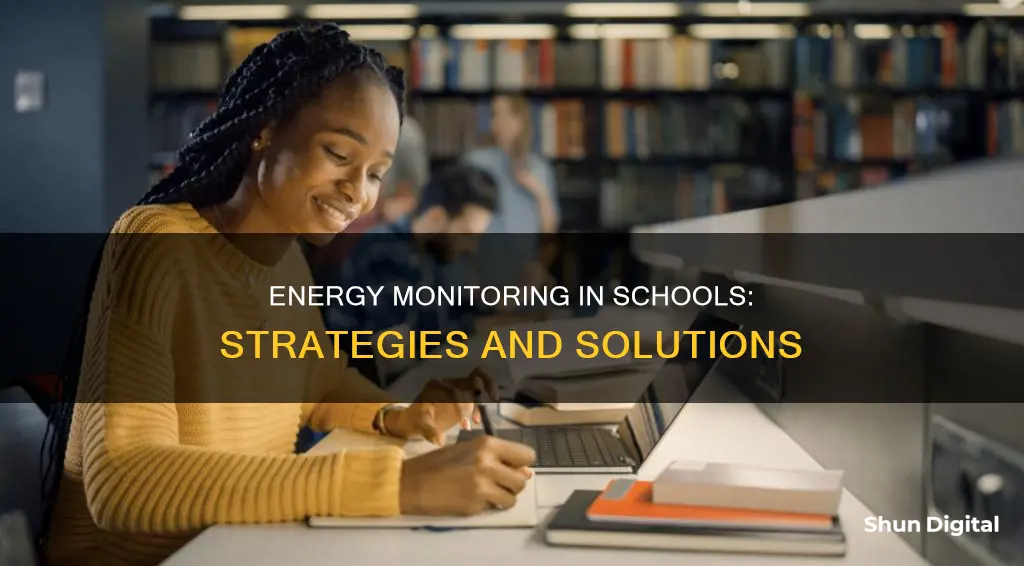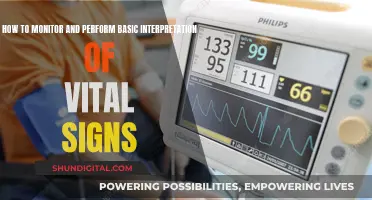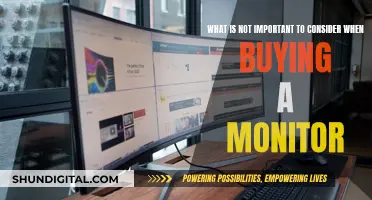
Energy usage is a significant expense for schools, with lighting, heating, cooling, and ventilation accounting for the greatest energy consumption. Schools can monitor their energy usage through energy audits, which can help identify areas where energy is being wasted and optimise their energy bills. Energy management software and meters are also available to track energy usage and identify areas for improvement. By understanding their energy usage, schools can set measurable goals, implement energy-saving practices, and reduce their environmental impact.
| Characteristics | Values |
|---|---|
| Energy usage monitoring methods | Energy audits, energy billing audits, consumption-based energy audits, energy tracking programs, meters, software products |
| Energy usage components | Lighting, heating, ventilation, air conditioning, office equipment, computers, vending machines |
| Energy usage influencers | Building size, equipment, location, number of students, occupancy patterns, occupant behaviour |
| Energy costs | Electricity, natural gas |
| Energy savings methods | Identifying energy waste, comparing with other schools, monitoring over time, setting up an energy monitoring system, analysing energy invoices, checking meters, appointing energy monitors, using an energy auditor, setting energy-saving targets, raising energy awareness, using an energy analyst or broker, improving energy efficiency, using rebates and tax incentives |
| Energy efficiency improvements | Upgrading equipment, replacing windows, improving insulation, sealing doors, using energy-efficient lighting, maintaining HVAC units, using variable frequency drives, implementing building envelope conservation |
What You'll Learn

Energy audits
There are two types of energy audits: virtual and on-site. Virtual energy audits are conducted remotely, without a physical visit to the school. They are based on the auditor's analysis of the school's energy consumption data, which is presented online. The auditor will then provide advice and 'action items' to reduce consumption. On-site energy audits involve data analysis, a site visit, thermal imaging, and a report with an action plan. Both types of audits can provide valuable insights and recommendations to help schools optimise their energy usage.
During an energy audit, the auditor will typically assess various aspects of the school's energy usage, including lighting, heating, hot water systems, ICT, and office equipment. They may also recommend upgrades to more energy-efficient systems or equipment, such as LED lighting or improved HVAC systems.
By conducting energy audits, schools can not only reduce their energy costs but also contribute to energy conservation and sustainability. With the high energy demands of schools, especially older buildings, energy audits can play a crucial role in optimising their energy performance and reducing their environmental impact.
Monitoring Comcast Data Usage: Tips and Tricks
You may want to see also

Energy-saving targets
Monitoring Energy Usage
The first step in setting energy-saving targets is to understand the school's energy usage. Schools can track their energy consumption by monitoring their energy bills and comparing them with similar schools. They can also conduct energy audits to identify areas where energy is being wasted. Energy audits can be conducted by external experts or by appointing energy monitors within the school.
Setting Energy-Saving Targets
Once the school has a clear understanding of its energy usage, the next step is to set specific and achievable energy-saving targets. These targets should be realistic and focus on areas with the greatest potential for energy conservation, such as lighting, heating, cooling, and ventilation. The targets should also take into account the school's unique characteristics, such as building size, equipment, location, and number of students.
Implementing Energy-Saving Measures
After setting the targets, the school should develop an energy-saving plan with specific actions and responsibilities assigned to individuals or groups. Some low-cost measures to reduce energy consumption include repairing windows and doors, adjusting lighting levels, conducting boiler tune-ups, and establishing temperature setbacks during nights and weekends. Schools can also invest in energy-efficient technologies, such as LED lights, occupancy sensors, and variable frequency drives for HVAC systems.
Raising Awareness and Involvement
Involving the school community is crucial to achieving energy-saving targets. This includes appointing energy champions, such as teachers or students, who can promote energy efficiency and spot energy waste. The school management should also prioritize energy efficiency and celebrate achievements to keep everyone informed and engaged.
Regular Review and Adjustment
Reinvesting Savings
Finally, any savings made through reduced energy consumption should be reinvested in further energy-efficiency measures. This creates a positive cycle where the school can continuously improve its energy performance and redirect savings towards more sustainable practices.
Monitoring Employee Internet Usage: Company Strategies and Tactics
You may want to see also

Energy-efficient equipment
Lighting Systems
Lighting, along with heating and cooling, accounts for a significant portion of energy consumption in schools. Schools can improve lighting efficiency by implementing simple strategies such as switching off lights when not in use, reducing excessive light levels, and cleaning lamps, diffusers, and fixtures. Additionally, schools can install automatic controls like occupancy sensors, timers, and dimmers, which offer a simple and inexpensive way to reduce energy usage. Upgrading to energy-efficient light bulbs, such as LED bulbs, can also significantly reduce energy consumption.
Heating, Ventilation, and Air Conditioning (HVAC)
Heating and cooling systems are major energy consumers in schools. To improve energy efficiency, schools can perform routine maintenance on their HVAC units, including cleaning burners and air conditioner coils, replacing and cleaning air filters, and checking for damage to ducts and pipe insulation. Schools can also consider investing in more efficient HVAC systems, such as those with variable frequency drives (VFDs) or variable speed drives (VSDs), which can help control motor operation and reduce energy bills.
Efficient Electrical Equipment
Computers and other electrical equipment can waste a lot of energy if left on for extended periods. Schools can implement measures such as enabling 'sleep' mode when equipment is not in use, switching off monitors when computers are inactive, and assigning responsibility to specific individuals for turning off electronic equipment. Schools should also prioritize purchasing new appliances with the Energy Star label, indicating superior energy efficiency.
Hot Water Systems
Hot water systems typically contribute to around 10% of a school's energy usage. Schools can improve the efficiency of their hot water systems by using flow restrictors, efficient shower heads, and ensuring that small hot water boilers are turned off at the end of the day. Repairing dripping taps and properly using and maintaining swimming pool covers can also reduce energy waste.
Renewable Energy Sources
Schools can explore integrating renewable energy sources into their facilities, such as solar panels or wind turbines, to generate clean energy and reduce their reliance on fossil fuels. This not only reduces energy costs but also demonstrates a commitment to environmental sustainability.
By investing in energy-efficient equipment and adopting energy-conscious practices, schools can significantly reduce their energy consumption and associated costs, creating healthier and more sustainable learning environments for students and staff.
Collab Edit: Browser Usage Monitored for User Experience
You may want to see also

Energy management software
One example of energy management software is Brightly Energy Manager™, which offers a simple centralized dashboard for schools to monitor their energy consumption. It helps identify utility waste, track energy-saving initiatives, and report on sustainability efforts. Brightly Energy Manager™ also provides advanced energy reporting, carbon emissions monitoring, and automated bill entry.
Another software solution is Facilio, which offers a comprehensive platform for facility management. It includes features such as utility tracking, energy analytics, cloud-based optimization, and fault detection and diagnostics. Facilio also provides a centralized platform that integrates access control, CCTV, HVAC, and other systems.
By using energy management software, schools can streamline their energy management processes, cut costs, and improve their sustainability efforts. These software solutions provide data and insights that help schools make informed decisions to optimize their energy usage and reduce their environmental footprint.
Monitoring Data Usage: Net10 Mobile Hotspot Guide
You may want to see also

Energy-saving practices
Monitoring Energy Usage
Schools can monitor their energy usage by keeping track of their energy costs, comparing their usage with similar schools, and analysing energy invoices and meters. This allows schools to identify areas where energy is being wasted and make necessary changes. It is recommended to assign a person responsible for gathering energy usage information and setting up a support team.
Energy Audits
Conducting an energy audit or building energy assessment is a crucial step in understanding how to reduce energy consumption. An energy audit can be conducted by an external expert or by the school itself. It involves analysing energy invoices, meters, and contracts to identify areas of energy wastage and potential savings. Schools can also consider a consumption-based energy audit, which focuses on understanding consumption practices and recommending energy-efficient technologies.
Energy-Efficient Technologies
Schools can invest in energy-efficient technologies to reduce their energy usage. This includes upgrading old HVAC systems, heat pumps, and office equipment to more efficient models. Energy Star is a helpful resource for finding information on products and associated rebates. Schools should also consider tax incentives and rebates that can make energy-efficient projects more financially viable.
Lighting Strategies
Lighting strategies offer simple and cost-effective opportunities to reduce energy consumption. Schools can implement measures such as switching off lights when not in use, reducing excessive light levels, and cleaning lamps, diffusers, and fixtures. Automatic controls like occupancy sensors, time controls, and dimmers are also recommended.
Heating and Cooling
Heating and cooling are typically the greatest energy expense for schools. To reduce energy consumption, schools can perform routine maintenance on HVAC units, such as cleaning burners and coils, replacing air filters, and checking for damaged ducts and pipe insulation. Schools should also ensure proper insulation and ventilation, as well as clean and well-maintained windows to optimise natural lighting and temperature control.
Behavioural Changes
Encouraging behavioural changes among staff and students can significantly impact energy savings. This includes raising awareness about energy efficiency, appointing energy champions to promote efficient practices, and making it fun by organising activities or competitions centred around saving energy.
By following these practices, schools can effectively monitor and reduce their energy usage, leading to both financial savings and a more sustainable environment.
Monitoring Solar Usage: ActewAGL's Smart Meter Revolution
You may want to see also
Frequently asked questions
Schools can monitor their energy usage by tracking monthly energy bills, identifying changes over time, and estimating baseline costs. They can also conduct energy audits, which involve hiring a trained external party to identify areas where energy costs can be cut.
Monitoring energy usage helps schools identify areas where energy is being wasted and cut costs. It also helps them make more informed decisions when purchasing new equipment or planning new buildings.
Schools can reduce energy consumption by repairing windows and doors, reducing excessive light levels, conducting boiler tune-ups, and instituting temperature setbacks during nights and weekends. They can also replace incandescent light bulbs with LEDs and ensure proper maintenance of HVAC units.
Schools, particularly older ones, may face challenges such as outdated equipment, inefficient HVAC systems, and poor insulation. Additionally, the complexity of different types of bulbs and lighting systems can make it difficult to optimize energy usage.







